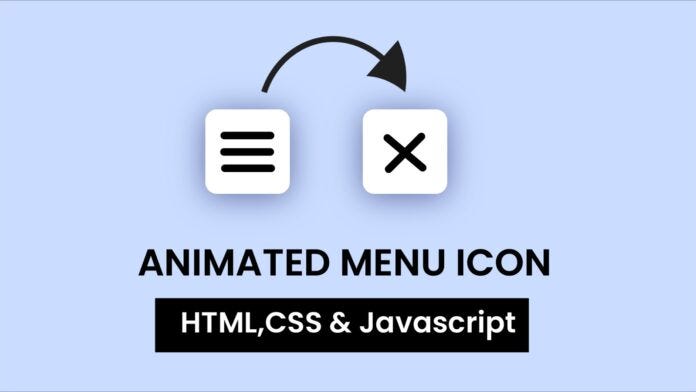Animated Menu Icon: Creating a Hamburger-to-X Animation
This project demonstrates a clean, modern UI element: a hamburger menu icon that smoothly transforms into an “X” when clicked. This type of animation provides visual feedback to users and adds a polished, interactive feel to websites and applications.

Let me walk you through how this animation works:
The project consists of three files:
- HTML structure (index.html)
- CSS styling and animation (styles.css)
- JavaScript for interaction (main.js)
Key Components
HTML Structure
The HTML creates a simple container with the menu icon, which consists of three horizontal bars:
<div class="menu-icon" id="menuIcon">
<div class="bar"></div>
<div class="bar"></div>
<div class="bar"></div>
</div>CSS Animation
The CSS handles the appearance and transition effects:
.menu-icon {
width: 60px;
height: 60px;
background-color: white;
border-radius: 12px;
box-shadow: 0 4px 8px rgba(0, 0, 0, 0.1);
display: flex;
justify-content: center;
align-items: center;
cursor: pointer;
position: relative;
}
.menu-icon .bar {
width: 30px;
height: 3px;
background-color: #333;
position: absolute;
transition: all 0.3s ease;
}
/* Default position for three bars */
.menu-icon .bar:nth-child(1) {
transform: translateY(-8px);
}
.menu-icon .bar:nth-child(3) {
transform: translateY(8px);
}
/* Transformed position (X shape) */
.menu-icon.active .bar:nth-child(1) {
transform: rotate(45deg);
}
.menu-icon.active .bar:nth-child(2) {
opacity: 0;
}
.menu-icon.active .bar:nth-child(3) {
transform: rotate(-45deg);
}JavaScript Interaction
The JavaScript applies the ‘active’ class when the icon is clicked:
const menuIcon = document.getElementById('menuIcon');
menuIcon.addEventListener('click', function() {
this.classList.toggle('active');
});How the Animation Works
- Initial State: Three horizontal bars stacked vertically create the hamburger icon.
- Transition: When clicked, CSS transitions animate the transformation.
- Final State: The top bar rotates 45°, the middle bar fades out, and the bottom bar rotates -45°, forming an “X”.
This animation demonstrates several important front-end development concepts:
- CSS transitions for smooth animations
- Positioning elements with transforms
- Using JavaScript event listeners
- CSS selectors to target specific elements
- Toggle functionality to switch between states
The clean, minimal design of this menu icon makes it versatile for various websites and applications. The smooth transition creates a satisfying user experience that subtly communicates the state change of the navigation menu.
Comments
Post a Comment